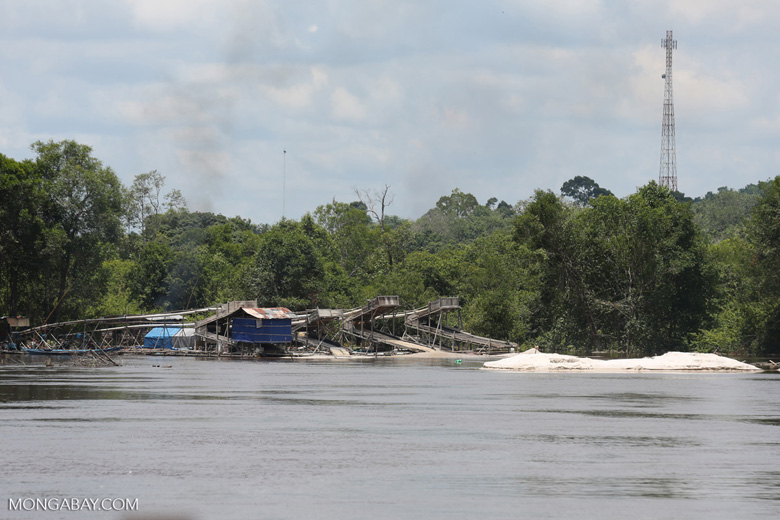- After ratifying the Minamata Convention, Indonesia became the first country to announce a plan to phase out mercury use from small-scale gold mining.
- The Environment and Forestry Ministry is working on a draft regulation on techinical guidance for the gradual ban.
- Mercury is still a presence in other fields, such as cosmetics, coal plants, batteries and more.
Kinks still need to be worked out of Indonesia’s mercury policy, which mandates a phasing out of the toxic substance from small-scale gold mining by 2018 and aspires to extend the purge to other areas.
With regard to the mining, the Energy and Mineral Resources Ministry issued a national action plan, the first of its kind, in 2013 after Indonesia ratified the Minamata Convention on Mercury, an international treaty meant to put an end to its use in fields like gold mining, cosmetics, power generation and dentistry.
Regular exposure to mercury or its compounds, via contaminated air, water or food, is dangerous to humans. In the 1950s, the Japanese city of Minamata became the site of one of the worst instances of mercury poisoning when a chemical company discharged effluent containing methyl mercury into the Minamata Bay, a source of seafood for local people. Contamination can result in a variety of unpleasant symptoms, including skin peeling, sensory impairment and paralysis.
Yuyun Ismawati, a Goldman prize-winning environmental engineer and senior adviser to the BaliFokus Foundation, which focuses on hazardous substances and waste management, said the action plan leaves much to be desired, as it includes no elaboration on eliminating worst practices, sets no baseline and gives no measures to prevent mercury recirculation.
“Yes, Indonesia is the first to publish its national action plan,” she said. “But it was made in a rush and did not involve other stakeholders.”
Besides small-scale gold mining, Yuyun added, Indonesia still needs to address mercury emitted into the atmosphere by coal-fired power plants and mercury contained in products like cosmetics and batteries, as mandated by the convention.

Yun Insiani, director of toxic and hazardous substance management at the Environment and Forestry Ministry, admitted that getting rid of substances like mercury has been a challenge.
“We need clear direction on management of these substances,” Yun said. “The problem is a lack of monitoring and ministerial and government regulations.”
To follow up the action plan, the ministry is preparing a draft regulation on technical guidance for eliminating mercury from small-scale gold mining.
Gatot Sugiharto, head of the Indonesian Artisanal Miners Association (APRI), said the draft regulation does not reflect the needs of the nearly one million Indonesians who engage in small-scale gold mining.
“The main issue here is that their activities should be legalized,” he said. “The environment is damaged because the miners are seen as illegal. They’re evicted from the site before they can rehabilitate the area.”
Small-scale gold miners care about the environment, and if they knew about the dangers of mercury, they wouldn’t use it, Gatot said, adding that the government should use the transitional phase to educate miners about the impacts of mercury. “Without [miners’] strong commitment, the mercury ban won’t work.”
Yuyun warned against legalizing small-scale gold mining without institutionalization and technical assistance.
“Small-scale mining is predicted to be the next ‘big player’ because remaining mineral deposits are located in remote areas, national parks and customary forests, which can only be economically exploited by artisanal miners compared to large miners,” she said, adding that major companies have already established junior mining companies and subcontractors to go after these deposits.
The government should consider the use of no-mercury technology and conduct an extensive mapping of mineral resources “because gold Is usually accompanied by other heavy minerals, especially arsenic, lead and mercury,” she added.
